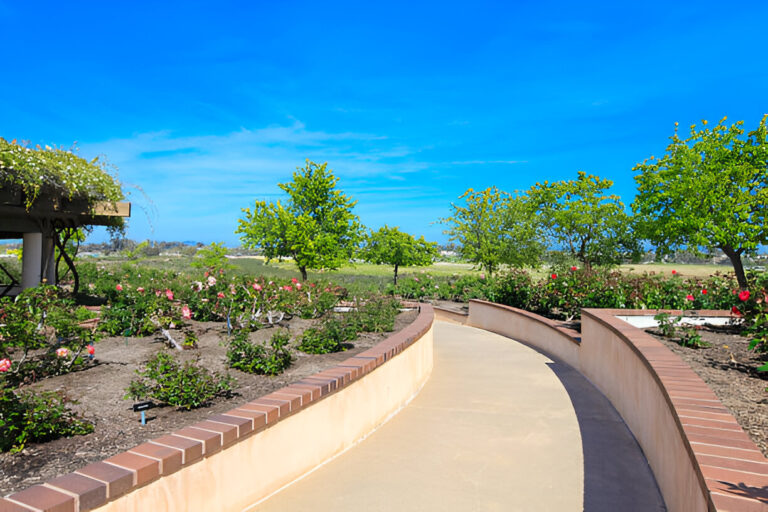Maintaining a beautiful garden in San Diego’s dry climate can be challenging, especially during extended periods of drought. Fortunately, adopting smart watering techniques can help your landscape thrive while conserving water. Here’s how to keep your garden healthy with efficient watering practices suited for San Diego’s unique conditions.
Understanding San Diego’s Climate and Soil Conditions
San Diego’s climate is characterized by warm, dry summers and mild, wet winters. Rainfall is often limited, especially during summer months, making water conservation crucial.
The region’s soil conditions vary, with sandy soils draining quickly and clay-heavy soils retaining water longer. Knowing your soil type can help you determine the best watering practices to ensure optimal moisture levels for your plants.
Choosing Drought-Tolerant Plants for Your Garden
Incorporating drought-tolerant plants reduces water consumption without sacrificing aesthetic appeal. Native plants like California poppies, sage, and manzanita are ideal for San Diego gardens. Succulents, lavender, and agave also thrive with minimal water.
Selecting drought-tolerant plants may sound simple, but achieving a cohesive and sustainable landscape requires thoughtful planning. For the best results, it’s wise to consult a landscape design contractor in San Diego for professional guidance. Experts can help you choose plants that thrive in San Diego’s dry climate while also incorporating a well-balanced landscape design that enhances your outdoor space.
Choosing experienced landscapers like Install-It-Direct, the best landscaping company in San Diego, ensures you’ll receive expert advice from professionals who understand the local climate, soil conditions, and sustainable gardening practices. Their knowledge can help you create a beautiful, low-maintenance garden that conserves water and flourishes year-round.
Efficient Irrigation Methods
Efficient watering systems can make a significant difference in reducing water waste and supporting plant health.
Drip Irrigation Systems
Drip irrigation delivers water directly to the roots, minimizing evaporation and runoff. This method is ideal for flower beds, shrubs, and vegetable gardens, providing precise hydration where it’s needed most.
Soaker Hoses vs. Sprinklers
- Soaker Hoses: These hoses slowly release water along their length, making them perfect for garden beds and rows of plants.
- Sprinklers: While effective for lawns, sprinklers are prone to water loss through evaporation and wind drift. Using sprinklers in the early morning or evening can improve efficiency.
Best Times of Day to Water
Watering during the early morning (before 9 a.m.) or late afternoon (after 4 p.m.) reduces evaporation and allows plants to absorb moisture before temperatures peak. Avoid watering during the hottest part of the day when water evaporates rapidly.
Watering Frequency and Techniques
Overwatering is a common mistake that can weaken plants and promote disease. Instead, focus on strategic watering methods.
Deep Watering Strategy
Deep watering encourages roots to grow deeper into the soil, improving drought resistance. Apply water slowly to allow it to penetrate several inches into the ground rather than soaking the surface. Deep watering once or twice a week is often more effective than frequent shallow watering.
Mulching for Moisture Retention
Mulching is one of the most effective ways to retain moisture in your garden. Organic mulches like bark, wood chips, or compost reduce evaporation, regulate soil temperature, and suppress weed growth. A 2-3 inch layer of mulch around plants provides excellent water-saving benefits.
Monitoring Soil Moisture Levels
Checking soil moisture before watering helps prevent overwatering. Insert a finger or soil probe a few inches into the soil — if it feels dry, it’s time to water. Installing soil moisture sensors can also provide accurate readings to guide your watering schedule.
Conserving Water with Smart Gardening Practices
Implementing water-saving strategies can significantly reduce your garden’s water needs.
Rain Barrels and Water Collection
Collecting rainwater is an eco-friendly way to supplement your garden’s water supply. Installing rain barrels under downspouts allows you to capture and store rainwater for later use.
Grouping Plants with Similar Water Needs
Arranging plants with similar watering requirements in the same area makes irrigation more efficient. Known as hydrozoning, this technique prevents overwatering or underwatering by ensuring plants receive the right amount of moisture.
Common Watering Mistakes to Avoid
To maximize your watering efforts, steer clear of these common mistakes:
- Overwatering: Too much water can suffocate roots and encourage root rot.
- Watering at the Wrong Time: Watering during midday causes excessive evaporation.
- Ignoring Soil Type: Sandy soils require more frequent watering, while clay soils need less frequent but deeper watering.
Conclusion and Sustainable Gardening Tips
Sustaining a thriving San Diego garden during dry seasons requires thoughtful watering techniques, efficient irrigation systems, and smart plant choices. By adopting these best watering practices, you can enjoy a beautiful garden while conserving precious water resources.

